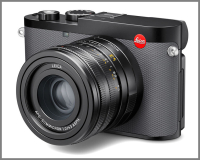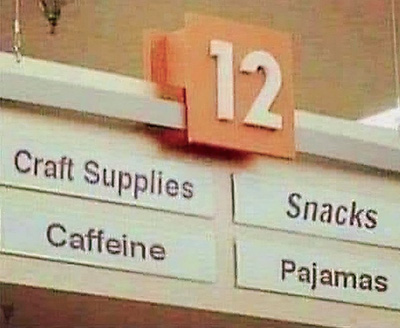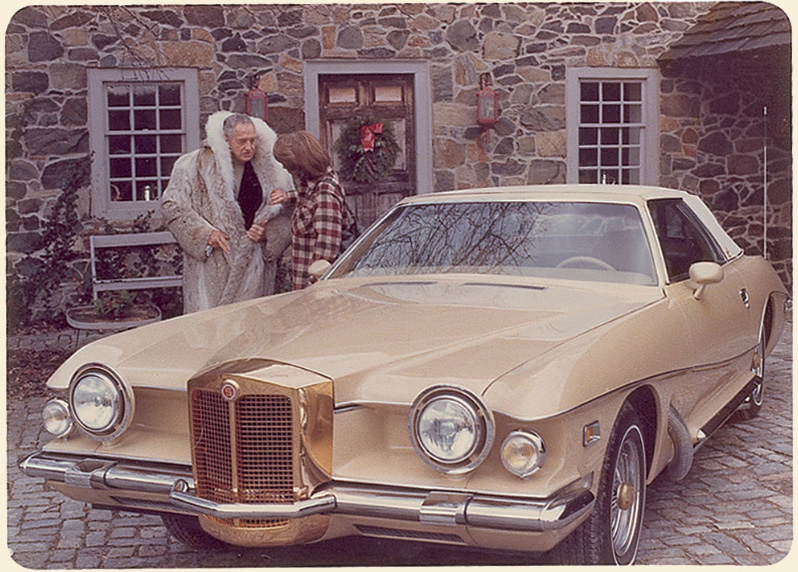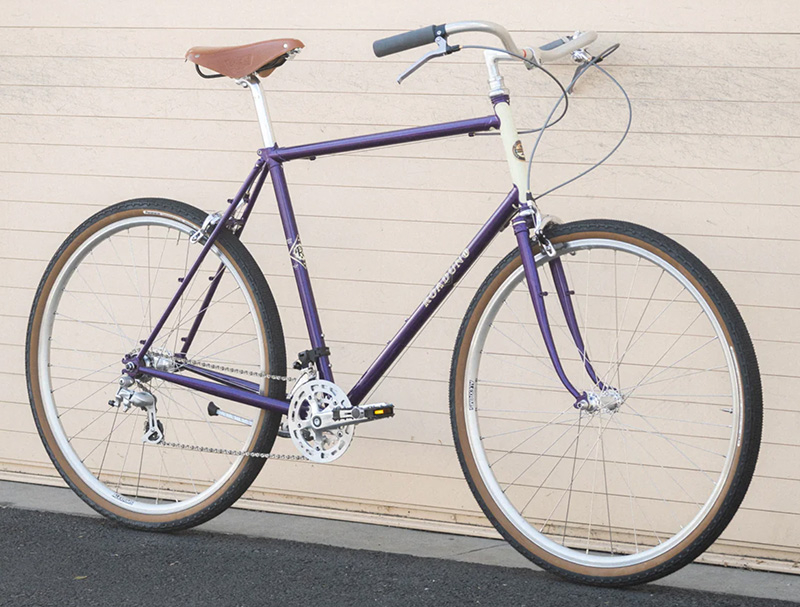Ed note: The original article is here. The camera is here. If you want one from the first release, don't sleep.
-
Chris Kern: "Mike wrote,
...in keeping with Leica's service to photographers, you will not be forced to pay as little for the Q3 43 as you would for a common garden variety Q3: you get to pay $600 more. Although not a large premium, the little dab of added exclusivity is much appreciated and Leica is to be commended for offering this courtesy.
"Touché. Yes, Leica cameras and lenses seem outrageously priced—and the original 28mm Q3 at U.S. $6,300 and the new 43mm model at $6,900 are arguably especially expensive for fixed-lens 'enthusiast' cameras. But the Q3 is perpetually out of stock almost everywhere in the United States, and the Q3 43 is likely to become so shortly after it begins shipping. Like other Veblen goods, no doubt their high prices actually enhance their appeal. And, frankly, other than its high resolution, the 60mm full-frame sensor in the Q models isn’t particularly impressive.
 "But in Leica’s defense, in addition to the spectacular quality of the 28mm ƒ/1.7 lens (I can’t speak for the new 43mm ƒ/2), the Q series firmware provides the most pleasant shooting experience I have ever encountered. After setting up appropriate 'profiles'—Leica’s term for specific clusters of settings that the user creates for particular purposes or types of subjects—typically the only shooting adjustments that need to be made after selecting the appropriate cluster are available from the manual controls for focus, aperture, and optionally exposure compensation and shutter speed. The Q menus essentially are confined to serving as configuration tools rather than shooting controls. The result is as close to a point-and-shoot snapshot camera as a camera designed for sophisticated photographers can be.
"But in Leica’s defense, in addition to the spectacular quality of the 28mm ƒ/1.7 lens (I can’t speak for the new 43mm ƒ/2), the Q series firmware provides the most pleasant shooting experience I have ever encountered. After setting up appropriate 'profiles'—Leica’s term for specific clusters of settings that the user creates for particular purposes or types of subjects—typically the only shooting adjustments that need to be made after selecting the appropriate cluster are available from the manual controls for focus, aperture, and optionally exposure compensation and shutter speed. The Q menus essentially are confined to serving as configuration tools rather than shooting controls. The result is as close to a point-and-shoot snapshot camera as a camera designed for sophisticated photographers can be.
"Fujifilm also gets this right with its crop-sensor cameras, and as a longtime Fuji user I have tried to make my X-T5 as simple as possible to operate, but the Fuji user agent never achieves the minimalism and clarity of its Leica counterpart. Does this justify the enormous price differential between a Leica Q and an interchangeable-lens X-T[x]? Depends on the user, I guess, but as I get older and more irritable, a congenial shooting experience becomes increasingly important."
Mike replies: Everything in this comment is good, but I'll especially second that last sentence. See my short post from 2019 called "Killing Themselves Softly With Complexification-Saturation."
Terry Letton: "Re 'Leatherette.' Can’t we just say plastic, i.e., fake leather?"
Mike replies: Actually "leatherette" is the correct term. It generically covers any sort of outer body cladding which can be anything from real lizard skin to rubber "armor" to vinyl. An exhaustive list would be difficult to compile as it's not information which is routinely given as a spec, and, with old film cameras, it's something that's user-replaceable—I doubt very many older MMM camera aficionados have not tried customizing an old film camera with one of the offerings from Cameraleather.com (note that the website is not fully functional. Probably best to call).
Calling it "plastic" would be confusing at best because it's too nonspecific; "leatherette" might not be literally correct in many cases but at least it communicates, to photographers anyway, what's being talked about.
EH: "The Pentax FA 43mm ƒ/1.9 Limited is also the only Limited to have been released for Leica as the SMC Pentax L 43mm ƒ/1.9 Special. It even comes with a matching finder. You can still find them on eBay."
Tom Duffy: "Finally, the curse is broken! A 'Q' that isn't a 28mm. I'd have preferred a 50mm but this is a big step in the right direction; 43mm is a great all around focal length for general purpose photography. Image stabilization, macro capability and a good sensor. All in an unaffordable package. I joke that my Canon R5 with 28mm pancake lens is a poor man's Leica Q, as if an R5 could be a poor man's camera except where Leica is concerned."
Thom Hogan: "When 'normal' has been defined as an angle of view anywhere between 34.5° horizontal (58mm lens) and 48.5° horizontal (40mm lens), the folk doing the defining need to provide just a bit more explanation, don't you think?"
[Ed. note: Ask and we shall receive:]
Craig Stocks: "The definition of a 'normal' lens is actually quite a bit more complex and mathematical. It includes print size and viewing distance. A normal lens presents the same angle of view as the print at a particular viewing distance. For instance, the angle of view of a 50mm lens on 35mm film roughly matches a 5x7 or 8x10 print held roughly at arms length. It’s a mathematical convenience that it happens to also roughly match the film diagonal. A photo taken with a wide-angle lens printed larger and/or held closer will look normal. Clyde Butcher uses this principle by making large prints that when viewed typical room or gallery distances gives the viewer an immersive experience as if they’re standing there experiencing the scene."
Mike replies: Ansel Adams made extra-large prints for a spell in an effort to accommodate the viewing experience in larger museum and gallery spaces. John Szarkowski (Head of the Photography Department at the Museum of Modern Art 1962–1991) rather cattily commented to the effect that Adams's large prints were virtuoso pieces because they looked almost as good as his smaller ones.
Jeff: "The Leica WATE (16/18/21 Wide Angle Tri-Elmar) can be used at intermediate focal lengths like a true zoom. I think think might be from your article at the old Luminous Landscape…cool: 'I received an email recently from my friend Harold M. Merklinger to the effect that he and his associates from the LHSA were told at Photokina that the WA-TE, unlike the earlier Tri-Elmar, was a true zoom and could be used at any focal length, not just at the 16–18–21mm settings. This was easy enough to try out, and indeed this is the case. Very cool, especially when used with the Universal Wide Angle Finder M which also allows in-between settings."
Ilkka: "Excellent write up. Thank you. Made my day."
Mike replies: :-)
Kenneth Tanaka: "I've been shooting exclusively with my Leica Q3 43 for five straight days now (10/4/2024). It's a nearly identical experience to shooting with my Q3 (28mm), except, of course, for the focal length. This is not really a review but I can offer my thoughts as a long-time Leica shooter.
"First and foremost I'd say that the 43mm APO-Summicron ƒ/2 lens is easily the finest lens of any brand I've ever used. (The previous distinction might have gone to the 28mm Summilux ƒ/1.7 on my Q3.) The color, the corner-to-corner detail, the contrast, the lack of distortions is simply unreal.
"Unexpectedly, I have found the 43mm just a bit narrow-feeling! I suspect this may be due to years using the Q's 28mm lens...eye/muscle memory? I thought that 40mm might be perfect for me...but not quite yet.
"In sum, Leica has now firmly established a uniform photographic experience throughout their camera lines. From the D-Lux 8 through the latest M, SL, and now Q cameras, you will feel instantly familiar with any Leica camera in you hands. Plus, it's an absolutely functionally efficient, unobtrusive experience. That's not for nothing. The only camera brand that tops it (albeit with fewer models) is Hasselblad's X system. Additionally, the same 60-MP sensor is now used in Leica's Q3, Q3 43, SL3, and M11/M11P/M11D cameras.
"Having said this, is the Q3 the ultimate tool for most people? Probably not. Honestly, the Q cameras always feel a bit too bulky for what they are, owing no doubt to their glass-laden full-frame lenses. Also, few people need 60-MP files (although you can shoot at 36 MP or 18 MP with the Q3's), certainly not for 'social media.' You can make very large, detailed prints from a 60-MP file, but very few will. I really do wonder if Ricoh's GRIIIx, or any smallish ILC with a good 40mm, might not be 'ideal' for most of us.
"I understand the naysayers' criticisms, especially the $7,000 price tag. Gah! But when the dust settles I really encourage folks to try to rent a Leica Q3 for a week and give it a look for yourself."
Mike replies: Thanks for the firsthand experience! Exciting.
I can give you one tip (that's all it is) for that "narrow feeling" you talked about. For me, with 28mm and wider I tend to think "scene" as I'm looking around. With 50mm and narrower, I tend to think "object." The focal lengths in the middle (35mm, 40mm, and 45mm) are ones that (for me—YMMV) are reasonably neutral, such that it can be versatile in terms of organizing pictures. So my suggestion would be to try getting used to your unaccustomed 43mm by thinking "object" as you look around while shooting; that might help speed up the process of getting comfortable with it.
You're a very experienced photographer so maybe this suggestion is coals to Newcastle for you, but it's possible it might help someone.
Mike
Original contents copyright 2024 by Michael C. Johnston and/or the bylined author. All Rights Reserved. Links in this post may be to our affiliates; sales through affiliate links may benefit this site. As an Amazon Associate I earn from qualifying purchases. (To see all the comments, click on the "Comments" link below or on the title of this post.)
Featured Comments from:
Ed Hawco: "I would love to have a Q3 (the original; 28mm is 'natural' to me) but it’s way out of my price range. However, the comment about usability almost tips the balance towards me selling a kidney and getting one. I’ve been complaining about digital camera usability (on this blog and elsewhere) for almost 20 years and it looks like the Q3 might actually come close to the de-gagetizing that digital camera controls so desperately need."





